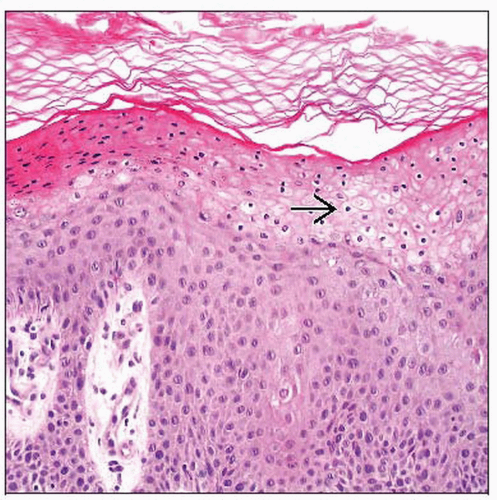Necrolytic Migratory Erythema
Cary Chisholm, MD
Key Facts
Terminology
Skin manifestation of glucagonoma syndrome
Clinical Issues
Trunk, groin, extremities, thighs, and buttocks are most frequently involved
Annular or round erythematous or violaceous patches
Vesicle or bulla formation with crusting after rupture
Self-limited: Typically resolves within 2 weeks
Age > 40 years (age distribution of glucagonoma)
Microscopic Pathology
Pale keratinocytes in upper epidermis with clear vacuoles and confluent parakeratosis
± necrosis, psoriasiform hyperplasia, spongiosis
Significant necrosis may produce subcorneal or intraepidermal clefting
May form neutrophilic pustules
Usually a superficial perivascular lymphocytic infiltrate ± neutrophils
TERMINOLOGY
Abbreviations
Necrolytic migratory erythema (NME)
Definitions
Skin manifestation of glucagonoma syndrome
Glucagon-secreting neuroendocrine tumor of pancreas
a.k.a. islet cell tumor
Presenting symptom of glucagonoma syndrome in 70% of cases
Has been reported in other conditions
Other pancreatic neuroendocrine tumors
Stay updated, free articles. Join our Telegram channel

Full access? Get Clinical Tree








